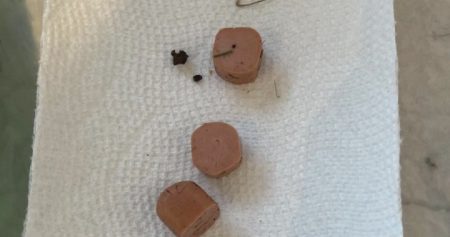Staff members of the maximum-security unit at the Saskatchewan Penitentiary in Prince Albert recently conducted a seizure of contraband and unauthorized items. The items seized included cannabis concentrate, cell phones and chargers, SIM cards, a USB key, stabbing weapons, tattoo paraphernalia, and tobacco, with a total estimated institutional value of $105,160. The Correctional Service of Canada (CSC) utilizes various tools such as ion scanners and drug-detector dogs to prevent drugs from entering its institutions. This is part of CSC’s efforts to heighten measures to prevent contraband from entering its facilities and maintain a safe and secure environment for everyone involved.
In addition to using tools like ion scanners and drug-detector dogs, the CSC also works in partnership with police to take action against individuals who attempt to introduce contraband into correctional institutions. By collaborating with law enforcement, the CSC aims to prevent the flow of contraband into prisons and hold individuals accountable for their actions. This coordinated approach helps to deter individuals from attempting to smuggle contraband into prisons, ultimately creating a safer environment for both staff and inmates within the correctional system.
The seizure of contraband at the Saskatchewan Penitentiary highlights the ongoing efforts of staff members to combat the presence of unauthorized items within the facility. Seizing items such as cannabis concentrate, cell phones, and stabbing weapons not only prevents potential harm within the prison but also disrupts illegal activities that may be facilitated by the presence of such items. By actively monitoring and confiscating contraband, staff members are working to maintain a level of control and safety within the correctional environment.
The total estimated institutional value of the seizures conducted at the Saskatchewan Penitentiary underscores the significant financial impact that contraband can have on correctional institutions. In addition to the inherent risks associated with the presence of unauthorized items, the financial implications of such seizures further highlight the importance of preventing contraband from entering prisons. By capturing the institutional value of seized items, authorities can better understand the scope of the issue and strategize ways to mitigate the flow of contraband in the future.
The use of ion scanners, drug-detector dogs, and other tools by the CSC demonstrates a proactive approach to addressing the issue of contraband in correctional institutions. By employing various detection methods and partnering with law enforcement, the CSC is enhancing its ability to prevent the introduction of unauthorized items into prisons. These efforts not only contribute to the overall safety and security of correctional facilities but also help to prevent criminal activities that may arise from the presence of contraband within the prison environment.
Overall, the seizure of contraband at the Saskatchewan Penitentiary serves as a reminder of the ongoing challenges that correctional institutions face in preventing the flow of unauthorized items. Through the collaborative efforts of staff members, law enforcement, and other stakeholders, steps are being taken to combat the issue and maintain a safe environment within prisons. By continually refining detection methods and implementing preventative measures, the correctional system can work towards reducing the presence of contraband and improving overall safety and security for all individuals involved.















